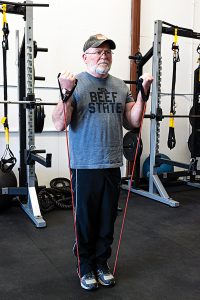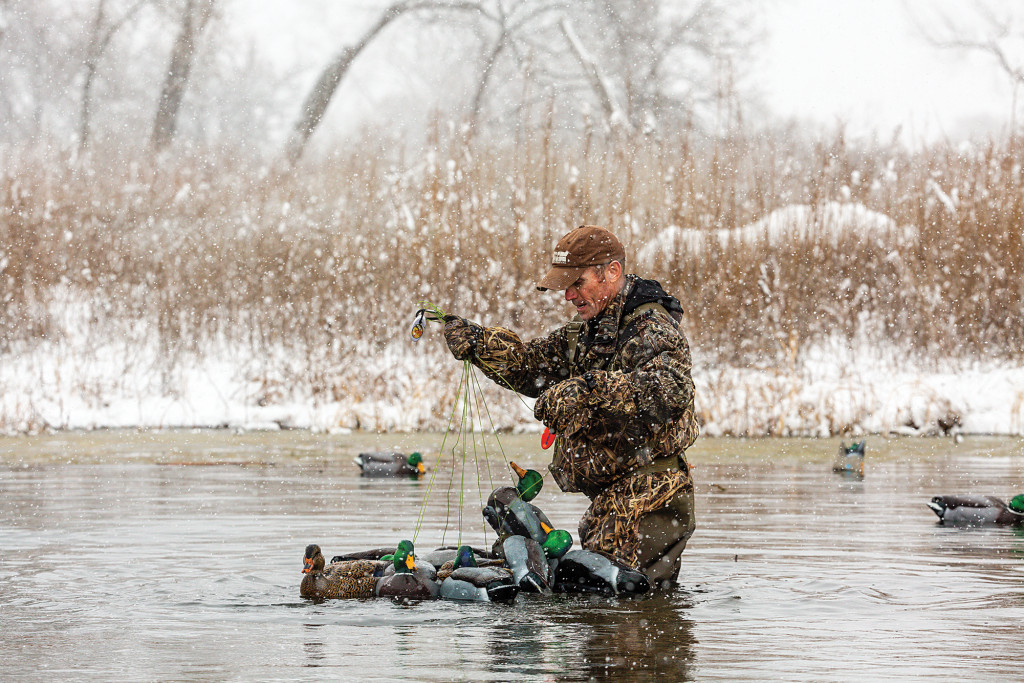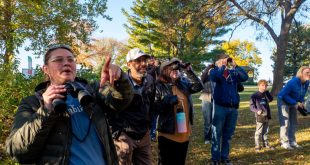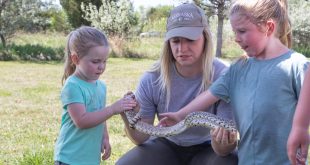How to Pursue Your Passion as You Age
Enlarge

Story by Todd Mills
Nothing drives a human being like pursuing a passion. And when it comes to hunting, well, some will do most anything to bag a bird or that trophy buck. But what happens when your physical capabilities limit or even stop you from chasing that long-time dream of hunting when you are past retirement? What once was a burning desire to strap on those waders and grab that gun, now gets replaced with “I used to hunt, but my body just can’t take it anymore.”
It’s hard work to hunt and fish. Two months of running and gunning for turkeys is not easy on the body, and if you don’t take care of yourself, those two months turn into two weekends, which turns into two mornings, which turns into one opening day hunt. And after that, it dies with your stories of “remember the time when we … ”
Old Father Time has a way of catching up faster than we’d like. But trust me, getting older doesn’t mean you have to quit hunting. If you do a little maintenance on your body, just like cleaning your hunting and fishing gear, you’ll be clawing your way out of the grave when the good Lord finally comes with that year’s permit still in hand.
Starting an exercise program is not easy, that’s for sure, and finding the right combination of exercises can be even tougher, especially ones that benefit the hunter. Here is a great place to start, right after you’ve gotten a physical from your doctor.
Upland Hunting
Several years ago, I spent opening weekend in Iowa hunting pheasants in knee-high grass. Although I was in good cardio condition, I was not ready physically to handle “knee ups” all day long. The next day, I paid for it.
The following are three options to help condition yourself to the rigors of upland hunting.
Cardio
Start slowly and allow yourself plenty of time to get in condition. Start with 20 minutes initially and increase up to 45 minutes.
Treadmill – Gradually add incline to simulate walking on uneven ground.
Outside – Walk hills as well as on flat ground two to three times per week.
Upper Body

Resistance training, or strength training, is important to strengthen your arms and shoulders for carrying a gun.
Resistance Bands – Bicep curls and shoulder raises can easily be done with bands.
Dumbbells or Curl Bar – Continue with the bicep curls and shoulder raises. Remember to use enough weight to make it difficult to finish the last couple repetitions.
Two-three sets per exercise with 10-12 reps.
Lower Body
Body Squats – This exercise will help to condition your upper thighs. Use your own weight to start with and eventually you can use a weighted ball or kettlebell. If you have access to a plyometric box, use it to step up and down. Another option would be to go up and down your stairs several times.
Waterfowl Hunting
Nothing taxes the body quite like waterfowl hunting. Walking on uneven terrain, carrying decoys, pushing a boat … even walking into an underground blind can be challenging. Now throw in waders, a gun, your blind bag and some cold temps. If you’re not in physical shape to handle these conditions, you’ll fade fast. Believe me, I have seen it happen to my favorite hunters.
Although your cardio program can be similar to the upland program, core strength is probably the most important component to add to your waterfowl conditioning program.
Cardio
 Short Planks – Keep your core tight. Start with 30 seconds and extend time as you’re able.
Short Planks – Keep your core tight. Start with 30 seconds and extend time as you’re able.
Push-Ups – Start on your knees if you need to. Push-ups will strengthen your upper body and core.
Battle Ropes – If you have access to ropes, this is a great core-building exercise that also combines cardio. Start with 30 seconds and continue to add more time depending on what you can handle.
Upper Body
Resistance Bands – As with upland hunting, bicep curls and shoulder raises are necessary.
Dumbbells – Add flat presses as you gain strength and balance.
Two-three sets per exercise with 10-12 reps.

Deer Hunting
Although I’m not a deer hunter, I’ve heard plenty of stories from hard-core hunters that deer hunting can be the toughest of all hunting when it comes to physical conditioning. In deer hunting, you use muscles that you don’t normally. Walking long distances to your favorite spot and climbing into a stand is one thing, but field dressing and dragging a deer out takes the physical exertion to an entirely different level.
All of the exercises discussed here can be used for all aspects of hunting, and mixing things up is helpful to avoid boredom and to keep your body from adjusting.
Cardio
Walk – Strap a backpack on and go for a long walk. Find an area that you can go up and down a slight incline. As your conditioning improves, adjust your pace to a fast walk.
Treadmill – If you have access to a treadmill, you can do the same. Steadily increase your time and distance as your conditioning increases.
Rowing Machine – If you have access, a rowing machine is a great way to acclimate your body to the pulling movement of dragging a deer out or pulling equipment.
Upper Body
Lat Pulldowns – If you have access to a pull-down machine or TRX bands, these are perfect for building upper body strength. Make sure you’re using weight that’s challenging.
Two-three sets at 12-15 reps.
Lower Body
Lunges – Maybe one of the most important leg exercises when preparing for long walks on uneven ground. You can start with a standing lunge and then progress to walking lunges as your condition improves. Do not allow your knee to go over your toe to get the most benefit and to prevent putting too much stress on your knees.

Nutrition as we Age
Although the focus of this article is on physical conditioning for the aging hunter, nutrition and recovery are just as critical as the workouts themselves.
It is estimated that on a hunt, you can burn anywhere from 150 to 500 calories an hour depending on the conditions. So, having both an “off-season” and “in-season” calorie intake is crucial to maintaining a weight that will not impede your activity level. Imagine being 20-30 pounds overweight and then strapping 20 pounds of hunting gear over your shoulder. You’ve got no shot to make hunting happen as you grow older if you’re not at “playing” weight.
OFF-SEASON DIET
There are a lot of theories on fad diets. Bottom line: It will always boil down to calories in and calories out. While there is no fast or quick fix to eating right, here are a few tips to help.
Minimize Empty Calories – No need to stop eating sugar, just keep it to a minimum. Empty calories such as alcoholic beverages and dressings can add calories in a hurry. Like most everything in life, you can eat most anything in moderation.
Eat Small and Frequently – The typical diet of many includes no breakfast, small lunch and a big dinner. That won’t work when trying to lose weight and especially when trying to speed up your metabolism. Think about a race car. Only the best fuel goes in, and it goes in at frequent intervals. Our human body is no different.
Stay Hydrated – Drinking water frequently also speeds up your metabolism and helps your body process foods. Keep a water bottle by you at all times and avoid sugary drinks. Water is an essential nutrient for survival. There is a reason for that.
IN-SEASON DIET
You may need to eat more calories this time of year. Depending on what you’re hunting, hunger and dehydration can come on in a hurry.
Prepare for the Day – Make sure you pack plenty of healthy snacks for the day. Since you never know how things will work out, be prepared for the worst. Almonds, low-sugar protein bars and dried fruit are all good options to pack and carry.
Don’t Overindulge
Nothing ruins a hunt like overindulging the night before. I have seen many hunts ruined due to lack of hydration and the body not working right. Limit your alcohol intake, and eat during or after you drink to avoid binge eating on that duck blind breakfast.
As we age, hunting doesn’t get any easier. Decreased strength, muscle tone, flexibility, endurance and particularly motivation can make hunting difficult. The thrill of chasing a big buck or getting your boat into your favorite honey hole can lead to a series of pulled muscles, shaky legs and gasping for breath. At almost 60, I am working hard to make sure these scenarios don’t happen to me, because I want to hunt well past retirement. As do you. ■
 Nebraskaland Magazine
Nebraskaland Magazine



